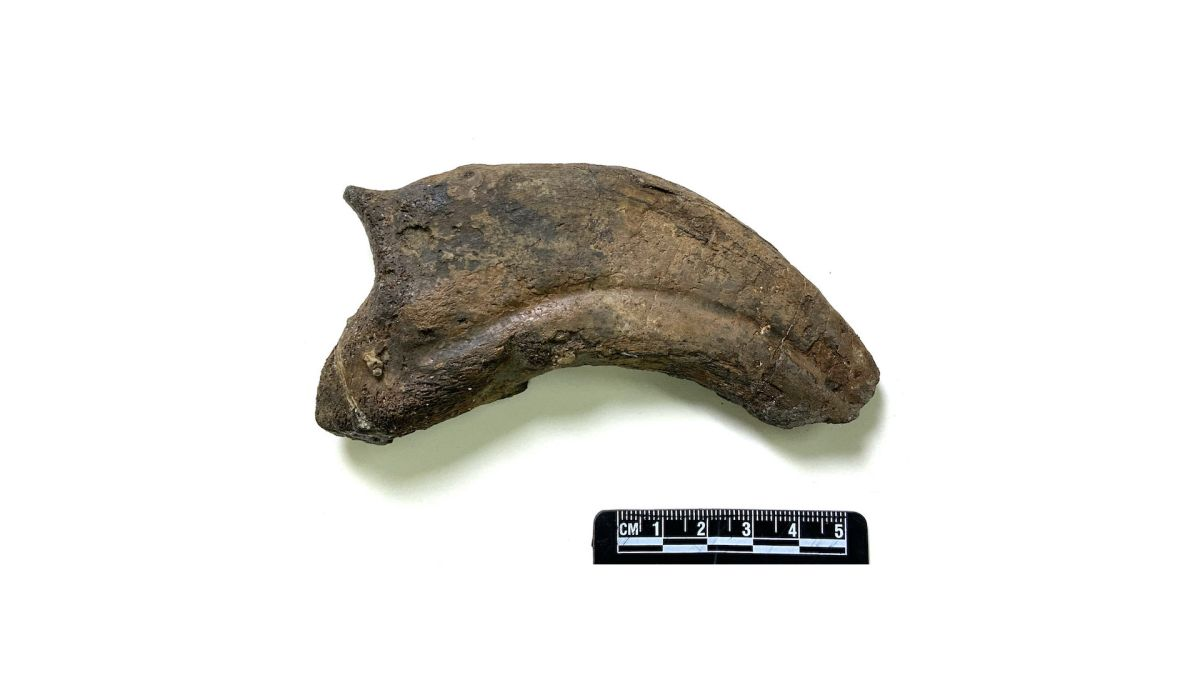The herbivore hunted for food using its claws, which had a ferocious appearance.
An artist's rendition of Paralitherizinosaurus japonicus, the newfound dinosaur species described in this study. (Image credit: Illustration by Masato Hattori)
A bipedal dinosaur with blades for fingertips once stalked the Asian continent's coastline millions of years ago. But a recent study found that instead of dissecting animal prey, these Edward Scissorhands-like tools were employed to chop vegetation.
The dinosaur belonged to a species of three-toed, bipedal, herbivorous dinosaurs known as therizinosaurs that lived between 145 million and 66 million years ago. The youngest therizinosaur fossil ever discovered in Japan—and the first one ever discovered in Asia in marine sediments—has just been described by scientists from Japan and the United States.
The researchers called this fossil Paralitherizinosaurus japonicus, which they believe represents a newly discovered species. The scientific name for the genus, which was already well-known, is "reptile by the sea" in Greek and Latin. The species name pays tribute to Japan, the country where the specimen was discovered.
A second group of researchers found the hook-shaped fossil in 2008; since then, it has been kept in the collections of the Nakagawa Museum of Natural History in Hokkaido, Japan. The fossil contains a fragmentary spine, wrist, and forefoot.
The specimen was discovered by Japanese scientists in Nakagawa, a region of Hokkaido, the northernmost of Japan's main islands, which is renowned for its abundant fossil beds. Paleontologists at the time of the fossil's discovery said it "was believed to belong to a therizinosaur," but due to a lack of comparative information at the time, the original researchers were unable to come to any firm conclusions, according to representatives of Hokkaido University in a statement. The fossil was encased in a concretion, a hardened mineral deposit.
One of the three fossilized claws of Paralitherizinosaurus japonicus. (Image credit: Photo by Yoshitsugu Kobayashi)
It has been possible to classify the fossil based on the shape of the forefoot claw thanks to new information from numerous other fossils that have been found and described in the intervening years. In order to obtain clear answers, a new group of paleontologists went back to the specimen.
Therizinosaurs, which lived between 80 million and 82 million years ago, are believed to have left behind the fossil, which is slightly under 4 inches (10 centimeters) in length, according to the current study's authors' research. The sword-like claw that the dinosaur previously used to comb through foliage in search of food to consume is preserved in the fossilized foot bone. The specimen was found to be a derived therizinosaur rather than a basal, or early, therizinosaur, with claws that were "generalized and not for specific use," according to the statement. Researchers believe the animal used its claws for a specific purpose.
"[This dinosaur] used its claws as foraging tools, rather than tools of aggression, to draw shrubs and trees closer to its mouth to eat," study co-author Anthony Fiorillo, a research professor in the Roy M. Huffington Department of Earth Sciences at Southern Methodist University (SMU) in Dallas, said in an interview with Live Science. "We think it washed out to sea after dying on land."
Claws and life reconstruction of Paralitherizinosaurus japonicus. The white regions on the silhouette indicate recovered fossils: a partial vertebra and a partial left forefoot. Gray indicates the reconstructed areas of the claws. (Image credit: Illustration by Genya Masukawa)
Therizinosaur fossils have been discovered in North America, Asia, and notably in what is now Alaska's Denali National Park and Preserve. The study claims that the animals evolved to live in coastal habitats throughout time. Prior to this discovery, two more possible therizinosaur fossils were found in Japan; however, they have not yet been characterized.
According to Fiorillo, it's impossible to determine the exact size of the therizinosaur based just on this specimen. According to the University of California Museum of Paleontology, experts can conclude with certainty that the dinosaur was "sizable," probably comparable to a hadrosaur, or duck-billed dinosaur, which could grow to be 30 feet long (9 meters) and weigh up to 3 tons (2.7 metric tons). The fossil is so well-preserved that, according to Fiorillo, "if we went back to the original site, we might find more of the animal."
"We remain cautiously optimistic, and it's on our radar," Fiorillo, who is also a former curator at the Perot Museum of Nature and Science in Dallas, continued.



















